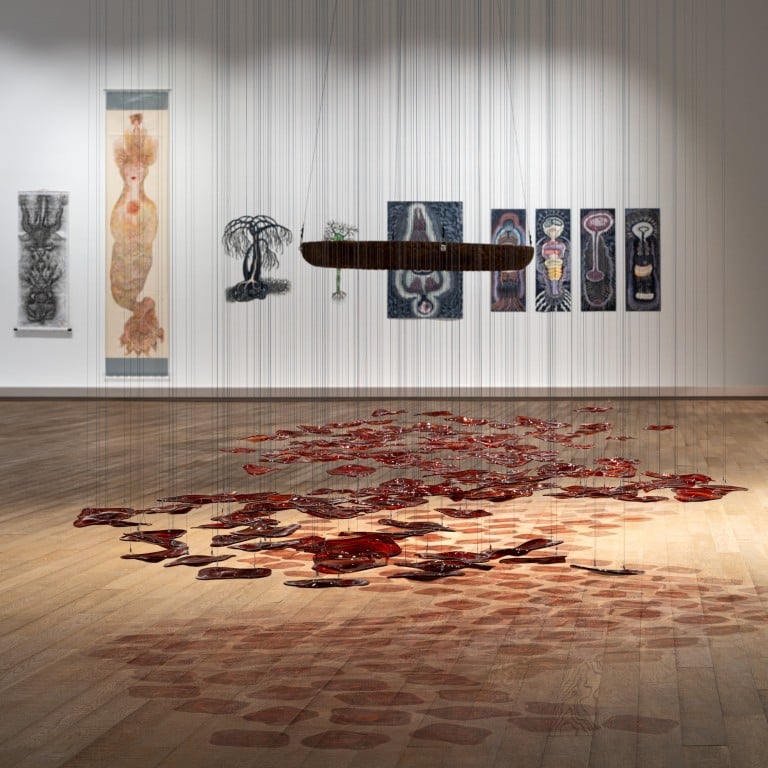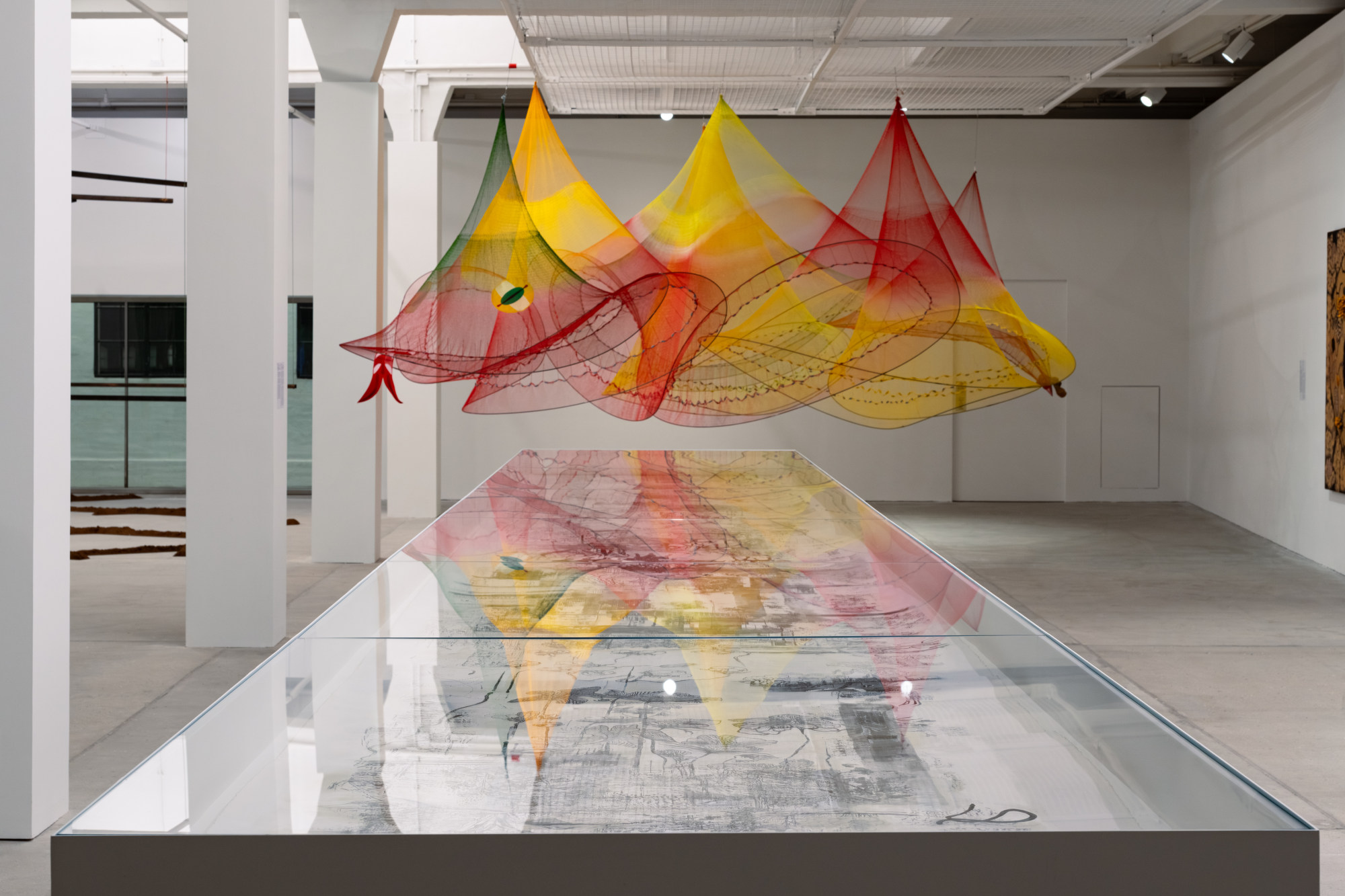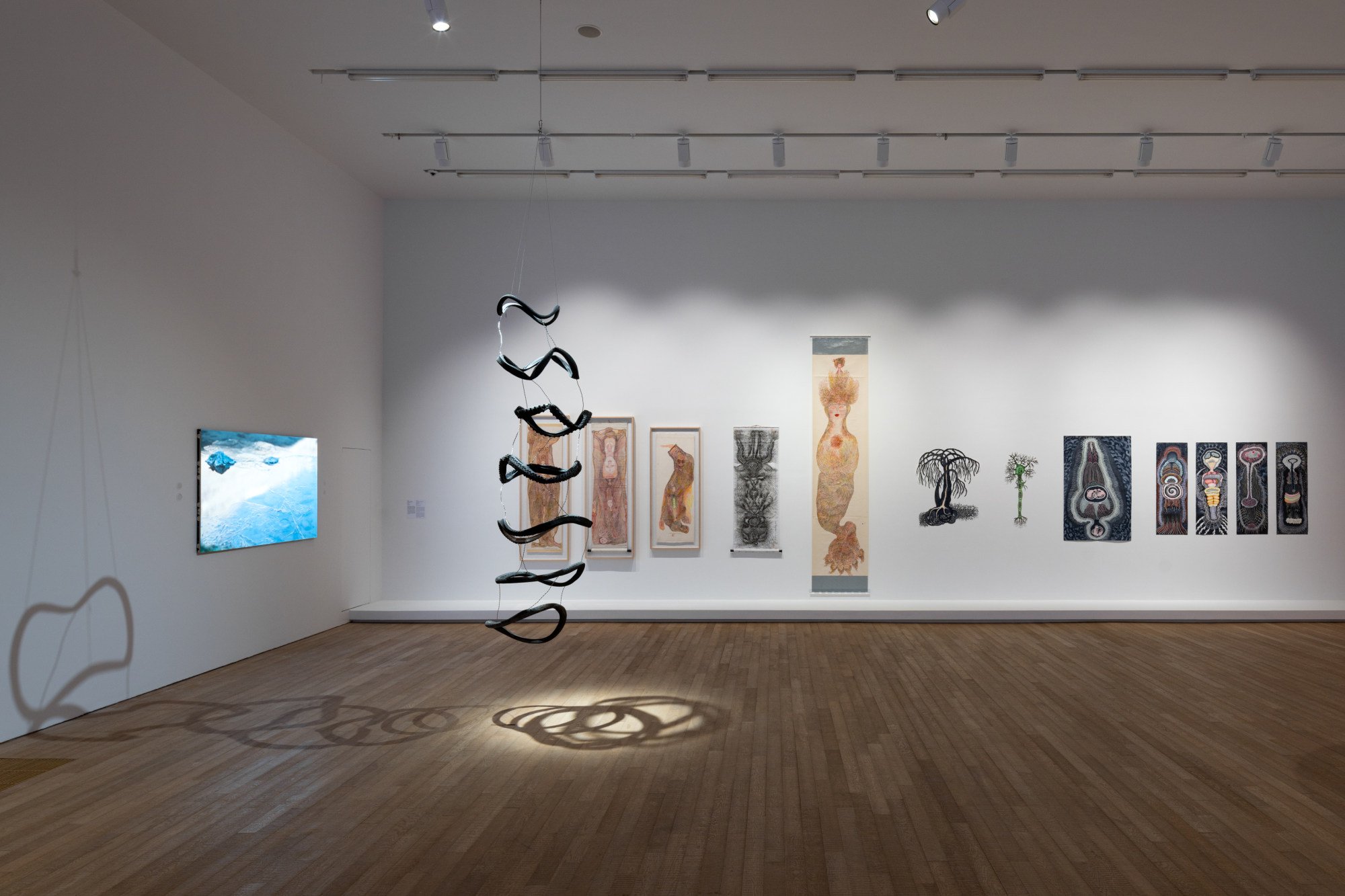
Ambitious eco-feminist art exhibition in Hong Kong pulls no punches as it suggests alternative ways to tackle world’s environmental crises
- ‘Green Snake: Women-centred Ecologies’ at Tai Kwun explores the connection between ecology and feminism in the context of the global environmental emergency
- The show contains over 60 works from artists and collectives from 20 countries, including Nepal, Ecuador, Colombia, South Africa, China and Hong Kong
A major art exhibition in Hong Kong pulls no punches in highlighting the relationship between exploitative global economics and the world’s environmental crises.
To survive, “Green Snake: Women-centred Ecologies”, at Tai Kwun Contemporary in Central, suggests alternative ways of living and caring for the environment based on indigenous knowledge and, as the title suggests, women’s experiences and perspectives.
It is an ambitious show, with over 60 works from artists and collectives from 20 countries, including 16 new commissions.
“At every end of the year we stage an exhibition that looks into some of the most urgent issues humankind faces at the moment,” says Pi Li, head of art at Tai Kwun.

Given the focus on alternative views, many of the artists hail from countries and cultures less visible in art history and mainstream media, including Nepal, Ecuador, Colombia and South Africa, as well as from China and Hong Kong (represented by Jaffa Lam’s new work evoking the powers of Tin Hau, goddess of the sea).
Argentinian artist Adriana Bustos’ Pejerreina (2023) is an example of a number of works that show how a community has been subjected to oppression, extraction, and the sanitisation of indigenous culture and knowledge under the guise of “advancement”.
A human-sized mud sculpture that is half-woman, half-fish lies on the floor appearing dead, her fish gills, human breasts and genitals bare.
Next to the dead “fish queen”, as the artist calls it, is a video of the mythical creature’s habitat, the Chimiray stream in northern Argentina.
Bustos has also created a giant map that refers to the politics behind the ecological destruction that South American rivers have suffered since the 16th century, when European powers began to expand their empires across the continent.
7 most popular arts stories in 2023, from nude canvases to ‘gross’ sculptures
Stephanie Comilang and Simon Speiser’s Piña, Why is the Sky Blue? (2021) goes beyond the immediate impact of colonialism and shines a light on how indigenous women transcend and change the narrative of colonisation.
In the virtual-reality video, Comilang and Speiser, of Filipino and Ecuadorean heritage, respectively, have made piña, which means pineapple fibre in both Spanish and Tagalog, into an intelligent being.
Pineapples are native to Ecuador, and were brought to the Philippines by Spanish colonialists. They then became an integral part of culture in the Southeast Asian country as they were incorporated into the country’s cuisine and even garment making.
“A lot of ancestral knowledge was destroyed during the colonial period. We wanted to look into what survived,” Comilang says.

The title of the exhibition comes from an eighth-century Chinese folktale called “Madame White Snake”. The green snake, a sister of the white snake in the tale, represents women’s agency, sisterhood and gender fluidity.
Outside the specific context of Chinese folktale, the title is also a metaphor for nature and its innate ability to repair and regenerate, akin to snakes shedding their skin.
The exhibition’s curators say that the works were selected to suggest alternative relationships that humans could have with nature and the rest of the non-human world, distinct from the Western economic developmental model that has been accepted as the norm for centuries.
‘A yellow catalyst’: famous Rubber Duck back in mini form for Seoul show
“A lot of the artists make artworks in relation to this question of ‘How did we get here? How could we have gotten to this point of systemic crisis?’” says co-curator Kathryn Weir, an independent curator based in Paris.
“We tried to decentre the idea of the human that went along with that 500 years of European enlightenment, linked to the colonialistic idea of the relationship with nature, where it was a man who represented all of humanity – a European man in that particular philosophy.
“So we are looking to the side of knowledge that has been suppressed, the side of knowledge that exists that can be reanimated.”
While many of the artworks bring attention to the harm already caused, some go further to directly suggest what people can do with this awareness.

The Asian Feminist Studio for Art and Research (AFSAR)’s Proxy Conference: In Forest (2023) is a 35-minute video through which the collective offers a different model of discussion than the conventional model that is typically dominated by nation states and male politicians.
In this new commission, people taking part in the discussion are seen sitting side by side in a forest as they share their personal stories, understand each other and connect.
“We wanted to offer a glimpse into a new model of conference and discussion,” says Eugene Hannah Park, a member of the AFSAR. “It is our goal to contribute in decentralising important discussions as much as possible, and as a way to do so we host a lot of Zoom discussion sessions through which anyone can participate and share their ideas.”
Two Chinese artists hold contrasting solo shows in Hong Kong gallery
Xue Tan, co-curator of the exhibition and senior curator at Tai Kwun, says that this is one of the most ambitious shows Tai Kwun has presented.
“We have been discussing how to look at our ecological crisis through a larger time frame, beyond modern history.”
“Green Snake: Women-centred Ecologies”, Tai Kwun Contemporary, 1/F JC Contemporary & F Hall, Prison Yard. Tue-Sun, 11am-7pm. Until April 1, 2024.

